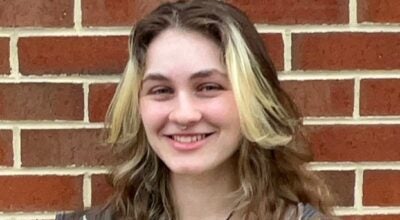Signs of spring
Published 9:37 am Thursday, April 5, 2018
Early last month, I had a conversation with a winter-weary soul about signs of spring. She had noticed an abundance of robins and wondered if new arrivals were augmenting the population that lives here year round.
I thought perhaps the juncos had departed for points north because I hadn’t seen any for a few days. She sighed. No, juncos were still plentiful in her yard. Local plant life offered more promise.
We compared notes about sightings of daffodil sprouts, dogwood buds, and tentative forsythia blossoms. All unmistakable signs of spring’s imminent arrival. Yet, the thermometer and weather forecast refused to cooperate. Despite the evidence of people wrapped in winter coats and regular announcements of school closings due to inclement weather, I held on to hope. Spring was coming. I could see it in the sky.
First, the days were getting longer. On March 10, we had 11 hours and 44 minutes of daylight. On March 11, despite the fact that the switch to daylight saving time plunged my morning alarm back into darkness, we had three minutes more daylight: eleven hours and forty-seven minutes. The spring equinox, March 20, marked the time when daylight hours equaled nighttime hours, and the allotment of daylight minutes will keep increasing until the summer solstice on June 21. That will be our longest day. We’ll get about fourteen and three-quarters hours of daylight.
More easily visible indicators of spring’s impending arrival appear in the night sky—at least when it isn’t too cloudy to see. During early April evenings, Taurus the Bull and the Seven Sisters riding on his back are beginning to sink toward the horizon. In just a couple weeks, they’ll be gone. Orion will follow them. Currently, he is sliding steadily toward the west and will step out of the nighttime picture around the end of the month. His faithful canine companion will chase after him and disappear from our skies in mid-May.
The position of the Big Dipper also announces the coming of spring. In the early evening, you can find it rising in the northeast, standing nearly upright on its handle. According to one Native American account, the dipper’s bowl represents a bear, and its handle represents three pursuing hunters. The bear comes out of its den and rises in the spring. Then, it crosses overhead during the summer. In the fall, the bear tires and the pursuers are able to shoot it with their bows and arrows. The bear dips to the horizon, and its blood seeps into tree leaves turning them red. The bear’s body rests in the ground, and a new bear rises in the spring so that the hunt can begin again.
Although the Big Dipper circles around the northern sky all year long, most constellations rise and set as the earth turns and change their positions slowly as Earth orbits the sun. Evening constellations of spring include the zodiacal constellations of Gemini, Cancer, Leo, and Virgo along with a host of others of lesser fame, such as Crater, Corvus, and Coma Berenices. If you’d like a chance to see these constellations, I invite you to join my husband and me on High Bridge on Saturday, April 14 at 8:30 p.m. High Bridge Trail State Park’s astronomy events are held near the center of the Bridge where the view of the sky is unobstructed.
The location is approximately 1.25 miles from the River Road parking area and about half of a mile from the Camp Paradise parking area, which can be accessed off Aspen Hill Road. When walking onto the bridge structure, visitors should turn off any flashlights that do not employ a red filter. The event is free, but State Park parking fees apply. If you can’t make it that day, mark your calendar for these additional events later in 2018: Saturday, June 9, beginning at 9:30 p.m., bring your binoculars and learn how to explore the night sky; Saturday, Sept. 8, beginning at 8:30 p.m., view Mars, Jupiter, and Saturn; and Saturday, Nov. 10, beginning at 7 p.m., see how pictures in the sky tell the story of Perseus and Andromeda.
KAREN BELLENIR has been writing for The Farmville Herald since 2009. Her book, Happy to Be Here: A Transplant Takes Root in Farmville, Virginia features a compilation of her columns. It is available from PierPress.com. You can contact Karen at kbellenir@PierPress.com.



